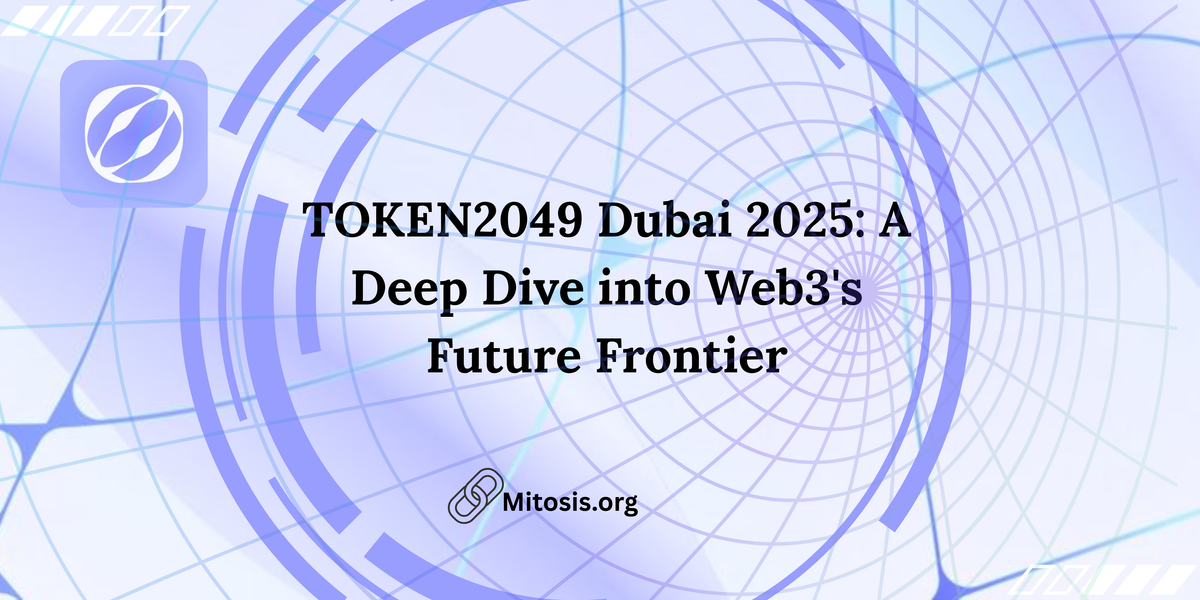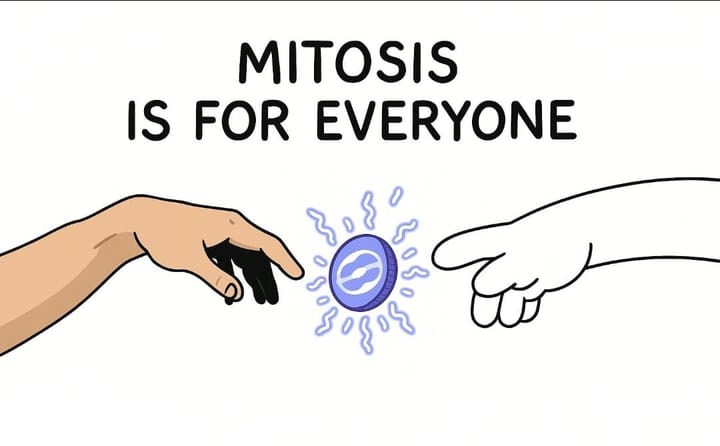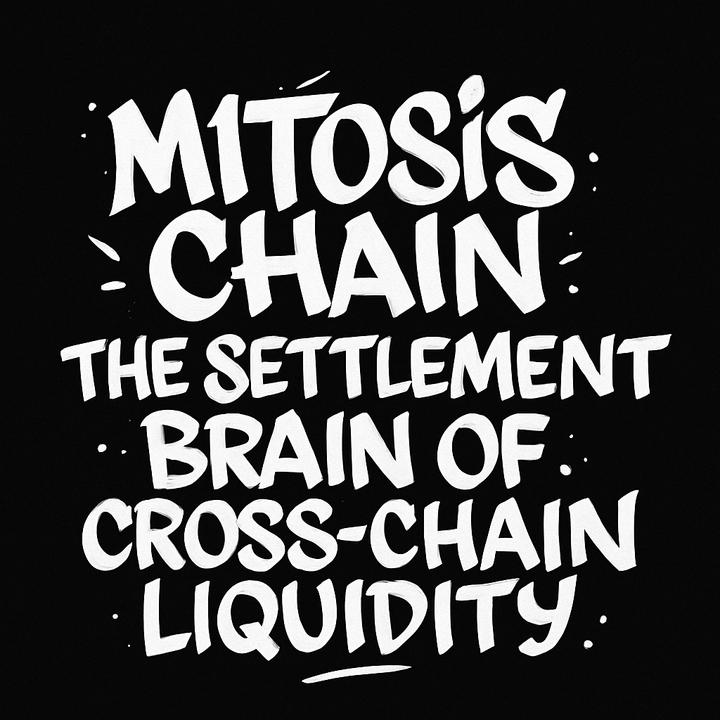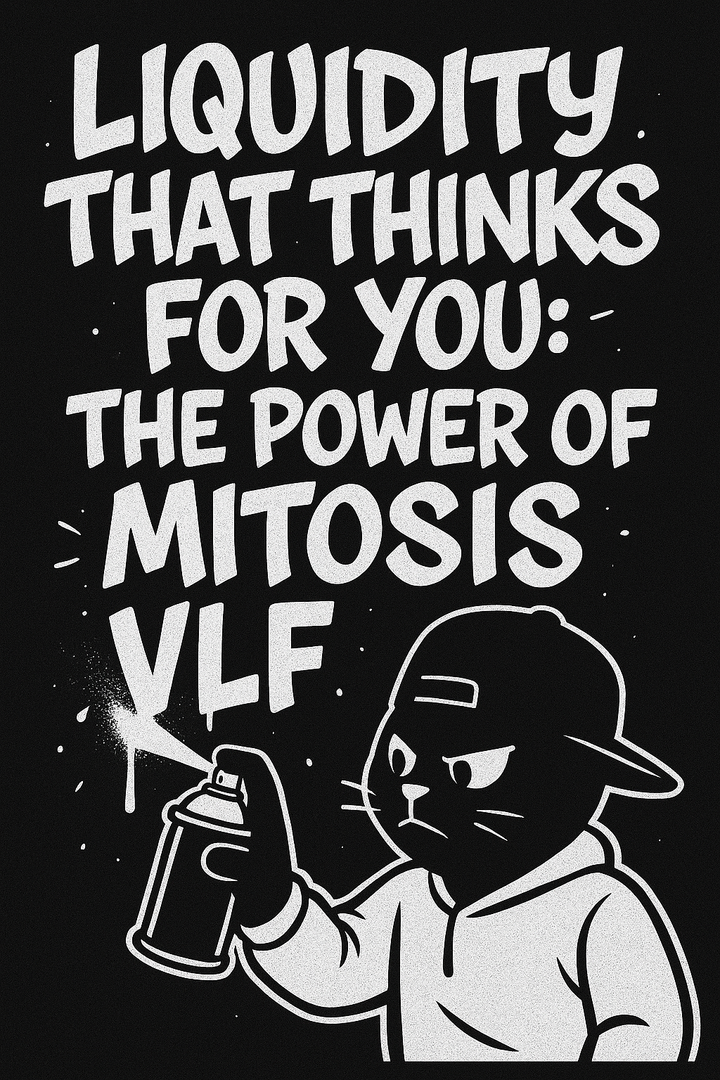TOKEN2049 Dubai 2025: A Deep Dive into Web3's Future Frontier

Token2049 Dubai 2025 convened over 15,000 attendees—founders, investors, and builders—across two days, spotlighting 200+ speakers and 200+ exhibitors. The summit underscored ten major trends: rollup scalability, AI-driven finance, real-world asset (RWA) tokenization, DePIN networks, sustainable crypto practices, identity solutions, DeFi composability, NFT & gaming economics, DAO governance enhancements, and venture funding flows. Each section below dissects these themes, linking back to Mitosis’s innovations and external developments to illustrate how the ecosystem is evolving. See https://medium.com/%40XT_com/navigating-token2049-dubai-2025-your-ultimate-web3-playbook-6447423456b1?
Rollup Scalability and Layer-2 Innovations
Rollups continue to dominate the scalability conversation as Ethereum’s gas fees and congestion push projects off-chain. At Token2049, Caldera showcased its “instant rollup” platform, allowing teams to spin up dedicated chains in minutes, a concept echoed by Mitosis’s own cross-chain vault deployments via its Ecosystem-Owned Liquidity (EOL) model.
By bundling hundreds of transactions off the main chain and submitting a single proof on Ethereum, rollups achieve 10–100× throughput improvements and slash fees by over 90%. Mitosis extends this paradigm with Matrix Vaults that automatically allocate miAssets across multiple rollups—Arbitrum, Optimism, and Base—optimizing both yield and network load in real time. This dynamic approach mirrors industry forecasts that 70% of DeFi TVL will reside in L2s by year-end. See https://medium.com/%40XT_com/navigating-token2049-dubai-2025-your-ultimate-web3-playbook-6447423456b1?
AI Meets Crypto: Smarter Finance
Artificial intelligence’s role in DeFi took center stage as speakers from Binance and Fetch.ai demonstrated AI-driven trading bots, predictive price oracles, and autonomous vault managers. These systems ingest on-chain data, off-chain indicators, and social sentiment to rebalance portfolios and set optimal liquidity ranges—a direct parallel to how Mitosis’s future AI integrations could power Matrix Vault rebalancing. See https://cryptoslate.com/stablecoins-leading-the-charge-in-e-commerce-evolution/?
Attendees saw live demos of reinforcement-learning agents adjusting AMM ranges on Uniswap v3 to capture over 20% more fees, validating academic findings on AI-enhanced liquidity provision. For Mitosis, integrating similar agents with its vault framework promises hands-free yield maximization and risk hedging, bridging the gap between static vault strategies and fully autonomous asset management. See https://www.linkedin.com/posts/techhallorg_token2049-web3-crypto-activity-7204142436883804160-ufUr?
Real-World Asset Tokenization
RWA panels explored tokenizing real estate, bonds, and art, with Meta Earth unveiling its ME Network v2.0 to support high-value assets on-chain. Participants learned how tokenized bonds on TON, like the $500 million Telegram Bond Fund, are delivering institutional yields with on-chain compliance. See https://cryptoslate.com/ton-foundation-launches-500m-telegram-rwa-bond-fund-with-libre/?
Mitosis’s vaults, originally designed for crypto assets, are now being tested for RWA integrations—deposit a tokenized property share into an EOL vault to mint miProperty, which can be lent or used as collateral on any rollup, unlocking liquidity previously trapped in real estate. This convergence of TradFi and DeFi exemplifies a broader shift toward hybrid financial markets.
DePIN: Decentralized Physical Infrastructure Networks
DePIN startups demoed blockchain-incentivized wireless nodes, renewable microgrids, and IoT sensor networks during side events. Projects like Althea and Hivemapper showcased real-world deployments where token rewards fund hardware upkeep and expand coverage.
Mitosis’s cross-chain liquidity can underwrite DePIN token economics by ensuring swift settlement of user-earned rewards across networks. Imagine a solar microgrid operator on Caldera rollups auto-converting earned tokens into stablecoin miUSDC via Mitosis, smoothing revenue streams and reducing financial friction. See https://week.token2049.com/?
Sustainable Crypto Practices
Environmental sustainability dominated discussions, with Binance’s CEO stressing clean-energy mining and Ethereum’s PoS success stories. Panels highlighted Icelandic hydro-powered farms and U.S. solar-backed mining co-ops, pointing to a 30% year-over-year increase in renewably powered hash rate.
Mitosis’s PoS-based network consumes under 0.1 kWh per transaction, 99.9% more efficient than legacy PoW chains, and its EOL model reduces redundant cross-chain messaging, further cutting energy use. By optimizing vault strategy shifts on-chain rather than spawning side-chain bridges, Mitosis exemplifies eco-friendly DeFi design. See https://www.linkedin.com/posts/lawblocks_web3-blockchainforgood-innovation-activity-7288870935258914816-LHHB?
Next-Gen Identity and Sybil Resistance
Humanity Protocol’s palm-scan demo on the Zeebu Stage attracted crowds, proving biometrically anchored Sybil resistance can be seamless and privacy-preserving. Similarly, projects like BrightID and Iden3 presented decentralized ID frameworks that guard user data and prevent fake-account warfare.
Mitosis is evaluating the integration of on-chain Proof-of-Humanity (PoH) checks to gate vault participation. By requiring a validated Human ID to deposit into high-yield Matrix Vaults, the protocol can thwart bot armies and ensure fair token distribution among genuine community members. See https://cryptoslate.com/ton-foundation-launches-500m-telegram-rwa-bond-fund-with-libre/?the
DeFi Evolution: Composability & Cross-Chain Liquidity
DeFi panels focused on “money legos,” showing how protocols can call each other’s contracts to build complex strategies. Mitosis’s Hyperlane-powered messaging layer stood out as an exemplar, enabling instant proof relays to mint miAssets on any chain without custodial bridges.
Speakers predicted that by 2026, 60% of DeFi volume will originate from multi-protocol strategies. Mitosis’s unified vaults reduce friction, letting users combine lending, farming, and options across chains in a single transaction, ushering in the next era of composable yield farming. See https://www.linkedin.com/posts/techhallorg_token2049-web3-crypto-activity-7204142436883804160-ufUr?,
NFT and Gaming Economies
Gaming-focused rollups and NFT tracks celebrated “play-and-earn” models, with Immutable and Ronin detailing how tokenized in-game assets boost engagement. Experimental vaults that collateralize NFT fractional seats for DAO governance attracted attention, merging social tokens with financial yield.
Mitosis is prototyping NFT-backed Matrix Vaults where rare digital art can earn rental yields. By depositing an NFT into a vault, users receive maNFT tokens representing fractional yields from exhibition rights on partner metaverse platforms—a novel blend of collectibles and income streams. See https://www.techdogs.com/tech-news/globe-newswire/bitmart-shines-at-token2049-dubai-a-pinnacle-moment-of-innovation-and-global-impact?
DAO Governance and Tokenomics
Governance workshops highlighted the superiority of Time-Weighted Average Balances (TWAB) in preventing vote brigading. Mitosis’s TWAB model, coupled with MORSE NFT incentives, surfaced as a case study in sustainable tokenomics that balances early participation with long-term commitment.
Experts urged protocols to adopt on-chain debate tools and snapshot governance for agility. Mitosis plans to roll out integrated proposal modules in its app, enabling vault holders to vote directly on reward curves and cross-chain capital allocations, streamlining community decision-making. See https://medium.com/%40XT_com/navigating-token2049-dubai-2025-your-ultimate-web3-playbook-6447423456b1?
Venture Trends and Funding Flows
VCs at Token2049 unveiled over $1 billion in new Web3 funds, focusing on L2 infra, AI-blockchain hybrids, and green computing. High-profile investors—Andreessen Horowitz, Paradigm, and Polychain—signaled their interest in protocols with robust tokenomics and governance. See https://www.techdogs.com/tech-news/globe-newswire/bitmart-shines-at-token2049-dubai-a-pinnacle-moment-of-innovation-and-global-impact?
Mitosis’s recent $7 million seed round and backing from leading institutions position it at the heart of this capital wave. With proven tech and strong community governance, the protocol is well-placed to attract further funding and partnerships, fueling its roadmap for multi-chain vault expansion. See https://www.cypherhunter.com/en/e/mitosis-org-raised-funding-2024-05-02/
Conclusion
In conclusion, Token2049 Dubai 2025 was more than just a conference—it was a convergence of visionaries, innovators, and pioneers shaping the future of Web3. With over 15,000 attendees from 160+ countries, the event underscored Dubai's emergence as a global blockchain hub, fueled by its supportive regulatory environment and commitment to technological advancement. The conference highlighted transformative trends such as the rise of Layer-2 rollups, AI-driven finance, and real-world asset tokenization. Projects like Fastex showcased the potential of integrating physical and digital experiences through their ftNFT platform, while the Bahamut Chain's PoSA consensus mechanism offered scalable and secure solutions for Web3 applications. As the lines between traditional finance and decentralized systems continue to blur, Token2049 Dubai served as a testament to the collaborative spirit driving the Web3 revolution. The insights and connections forged here will undoubtedly influence the trajectory of blockchain technology, fostering a more inclusive and innovative digital future.
🔗Links:



Comments ()